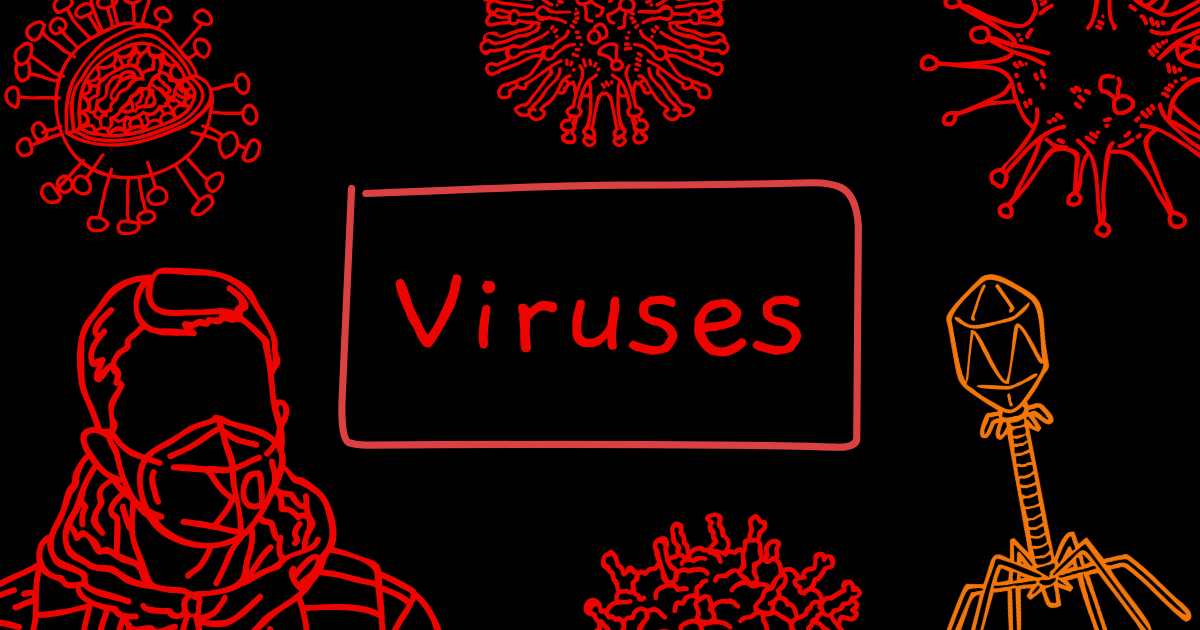Strep throat is one of the most common childhood infections, but in rare cases, this bacterial illness can trigger alarming and long-lasting changes in a child’s behavior. Scientists are only now beginning to understand how the infection may affect the brain.
For Charlie Drury, his eighth birthday in November 2012 marked a turning point that changed his life forever.
The day began like any other celebration — with cake, gifts, and themed party food. But as the hours passed, Charlie’s mother, Kate Drury, noticed unusual shifts in her son’s behavior.
It began with a simple eye twitch, followed by Charlie repeatedly sniffing his hands. Later that evening, his condition worsened when he developed a fever. Concerned, Kate rushed him to an urgent care clinic near their home in Illinois, where doctors diagnosed him with Streptococcal pharyngitis (strep throat).
#1In the weeks that followed his strep throat diagnosis
Charlie’s health took a disturbing turn that left his mother, Kate Drury, completely bewildered.
He became hypersensitive to smells, forcing his mother to stop cooking inside the house. He developed severe separation anxiety, yet even the gentle touch of his own mother triggered violent reactions — Charlie would scream and scrub at the spot where their skin had met.
Sleep became nearly impossible. He stopped eating to the point of anorexia, refused to bathe, and began throwing objects around the house. His condition worsened with hallucinations, and he lost the ability to read and write.
The boy who had once been a bright student and gifted athlete with no behavioral issues had seemingly vanished.
“I lost my child in a day,” Drury recalls.
After more than a month of confusion and heartache, physicians finally reached a diagnosis: a rare and little-known condition called Paediatric Autoimmune Neuropsychiatric Disorders Associated with Streptococcal Infections (PANDAS).
#2Sudden Onset of Symptoms
Children with PANDAS (Pediatric Autoimmune Neuropsychiatric Disorders Associated with Streptococcal Infections) often experience an abrupt onset of tics and/or obsessive-compulsive disorder (OCD) symptoms — sometimes appearing literally overnight. Just as quickly, these children may also develop a range of other problems, including regressions in motor or developmental skills, aggression, mood swings, irritability, sleep disturbances, and even physical pain.
#3How Common Is PANDAS?
The true prevalence of PANDAS remains unclear, but researchers agree it is rare. One estimate suggests about 1 in 11,800 children may develop PANDAS or a related condition, PANS (Pediatric Acute-Onset Neuropsychiatric Syndrome), each year. Data from international patient registries indicates that boys are more commonly affected than girls, and symptoms typically appear before puberty.
“For obvious reasons, parents are completely terrified,” says Shannon Delaney, a child and adolescent neuropsychiatrist in New York City. “I frequently hear them describe it as, ‘It feels like my kid is not there. It feels like they’re possessed.’”
#4From Sydenham Chorea to PANDAS
The link between strep infections and neurological symptoms is not new. In 1894, doctors described Sydenham chorea, a movement disorder that appeared after throat infections. Nearly a century later, Susan Swedo and her team at the US National Institutes of Health (NIH) published findings showing that strep infections could also trigger sudden-onset neuropsychiatric symptoms, leading to the recognition of PANDAS in the 1990s.
Swedo, now the chief science officer at the PANDAS Physicians Network, explains it this way:
“The wrong strep, in an unlucky child… leads to a misdirected immune response.”
#5How Strep Affects the Brain
In rare cases, a child’s immune system misfires when fighting off strep throat. Instead of only attacking the bacteria, the immune system produces antibodies that mistakenly target healthy brain tissue. These antibodies appear to penetrate the blood-brain barrier and disrupt normal brain function.
Animal studies suggest that immune cells triggered by strep may travel along nerves from the nose to the brain, weakening protective barriers and allowing inflammation to set in.
#6Ongoing Debate — and Growing Evidence
Not all scientists agree on the exact mechanisms. However, multiple research teams have found inflammation and structural changes in the brains of children with PANDAS — particularly in the basal ganglia, a region involved in motor control, decision-making, learning, and emotional regulation.
Since OCD has also been linked to basal ganglia dysfunction, the evidence strengthens the case for PANDAS being a real autoimmune disorder rather than a purely psychological condition.
“This is a real disorder caused by an autoimmune response, not poor parenting,” says Jennifer Frankovich, a pediatric rheumatologist and director of the Stanford Immune-Behavioral Health Program. “That recognition alone can be incredibly valuable for parents who feel lost and blamed.”
#7Beyond Strep: Other Triggers for PANDAS-like Symptoms
While strep throat is the most recognized trigger for PANDAS, other infections have also been linked to similar neuropsychiatric symptoms. Respiratory illnesses such as influenza have been associated with PANDAS-like flare-ups, and early research suggests that SARS-CoV-2 (the virus responsible for Covid-19) may also play a role. A 2023 study theorized that Covid-19 might worsen existing symptoms or spark new ones by increasing inflammation in the body and potentially reactivating dormant viruses.
Clinical evidence also suggests that tick-borne infections, including Lyme disease, may act as catalysts for sudden-onset psychiatric symptoms in children, according to child psychiatrist Shannon Delaney.
#8PANDAS vs. PANS: When the Trigger Isn’t Strep
When children develop abrupt neuropsychiatric symptoms without a clear strep infection, doctors often use the broader diagnosis of PANS (Pediatric Acute-Onset Neuropsychiatric Syndrome). PANDAS is considered a subtype of PANS, with overlapping but distinct diagnostic criteria.
Both conditions can be devastating, leading to sudden changes in behavior, motor function, and mood — often with little warning.
#9The Relentless Cycle of Symptoms
For children with PANS or PANDAS, infections can cause symptoms to wax and wane for years. Patients may experience long stretches of remission, only to relapse when another illness — whether strep, Covid-19, or another infection — triggers the immune system again.
“If the child gets sick again with something – it might be strep, it might be Covid – suddenly these symptoms come back,” says Sarah O’Dor, a clinical psychologist who directs the Pediatric Neuropsychiatry and Immunology Program at Massachusetts General Hospital in Boston.
#10Challenges in Diagnosis and Treatment
Finding effective treatment can be an exhausting journey for families. Few clinicians specialize in PANS/PANDAS, and some physicians remain skeptical, dismissing the conditions entirely.
A study from the International PANS Registry found that 87% of children struggled to access appropriate care. Barriers included a shortage of knowledgeable healthcare providers and challenges securing insurance coverage for treatment.
This lack of access often leaves families feeling isolated, even as children suffer through debilitating cycles of symptoms.
#11The Treatment Dilemma: More Than Just Psychiatric Drugs
When children with PANS or PANDAS are first brought in for care, clinicians often focus on the psychiatric symptoms. Medications such as antidepressants or antipsychotics may sometimes help — but research shows many patients are unusually sensitive to side effects, even at low doses. Others simply fail to respond.
According to Sarah O’Dor, most children require a multi-pronged approach that tackles not only the psychiatric symptoms but also:
The underlying infection that triggered the onset
The immune response believed to be misfiring
#12Early Intervention: The Difference Between Relief and Relapse
If treatment begins promptly, conventional medications can make a remarkable difference. Antibiotics, steroids, and even over-the-counter painkillers have been shown to ease symptoms in many cases, says Jennifer Frankovich, who co-authored clinical guidelines on treating PANS/PANDAS.
But when cases are severe or left untreated for too long, families often turn to more invasive therapies, including:
IVIG (intravenous immunoglobulin): infusions of donor antibodies
Plasma exchange therapy: a process that removes and replaces plasma in the blood
As early as 1999, research by Susan Swedo suggested both IVIG and plasma exchange were effective against PANDAS symptoms. Yet, nearly 30 years later, she laments:
“It’s ridiculous that children are not getting help.”
#13A Divided Medical Field
Not all studies have been conclusive. A 2016 trial co-authored by Swedo found no statistically significant difference between IVIG and placebo. By 2018, a European research review concluded that more rigorous trials are urgently needed.
Still, patient testimonials continue to fuel advocacy. Kate Drury, whose son Charlie developed PANDAS at age 8, recalls paying thousands for his first IVIG infusion:
“It brought him back to us.”
Her family’s fight led to “Charlie’s Law”, an Illinois statute passed in 2017 that requires insurance coverage for PANS/PANDAS treatments, including IVIG. But even with the law in place, she says access remains a battle. Now 20, Charlie still experiences severe flare-ups and is expected to require lifelong IVIG and plasma exchange therapy.
“We’d be in hospitals and they’d tell us, ‘We can’t help you.’ Even though there’s a law in his name.” – Kate Drury
#14Growing Recognition, Lingering Skepticism
Globally, recognition is improving: the World Health Organization (WHO) has officially classified PANDAS as a disease, and in 2023 the UK Parliament held a hearing dedicated to PANS and PANDAS.
Yet skepticism persists. In a 2025 report, the American Academy of Pediatrics acknowledged PANS as a “likely” valid diagnosis but stressed the lack of universally accepted diagnostic tools.
Indeed, there is still no single biomarker or test that confirms the condition. Brain scans often look “normal” to radiologists, says Frankovich, even though inflammation and subtle changes are present.
“So these poor patients are getting dismissed.”
#15Rewritten & SEO-Optimized Version
Researchers are still working to unlock the mysteries behind PANS and PANDAS, trying to understand why these autoimmune conditions occur, what exactly happens inside the body and brain of affected children, and whether clear biomarkers could make diagnosis faster and open the door to better treatments.
One leading expert is Dr. Brent Harris, a neuropathologist at Georgetown University in Washington, DC. He directs the PANDAS/PANS and Other Neuroimmune Disorders Brain Bank, a groundbreaking project that addresses a major gap in research. Studying the brains of patients who tragically passed away from these disorders allows scientists to examine changes in much greater detail than possible during life.
So far, Harris and his team have discovered evidence of inflammation in the basal ganglia and other critical brain regions, findings that could one day point to new treatment targets. Still, he emphasizes that much more research is needed. His lab currently works with only nine donated brains—far too few to draw broad conclusions.
Among these donations is the brain of Louisa “Lulu” Johnson, a child from New Jersey who passed away in 2021 after “two and a half years of unthinkable pain and suffering,” her mother, Alissa Johnson, recalls. Lulu’s decline was made worse by the lack of awareness and difficulty accessing specialized care for PANDAS patients.
Her symptoms began abruptly just after New Year’s Day in 2019, at age 11. “We came home on January 1st, and on the 2nd it was like she woke up in a completely different body,” her mother says. Once a happy, thriving child, Lulu suddenly developed severe gastrointestinal distress, loss of appetite, insomnia, and alarming behavioral changes—including attempts to climb out of a moving car.
The Johnson family’s heartbreaking story underscores why more research, funding, and awareness are urgently needed. With better understanding of autoimmune brain disorders in children, families could receive earlier diagnoses, more effective treatments, and—most importantly—hope.
#16The Long Road to Diagnosis and Treatment
Lulu’s health crisis only worsened in the months after her sudden behavioral and physical decline. She was hospitalized multiple times during the winter and spring, eventually testing positive for strep in February 2019. Yet, despite clear signs, her family spent months searching for answers. During this delay, Lulu was prescribed psychiatric medications that not only failed to help but also caused severe side effects.
When the long-awaited PANDAS diagnosis finally arrived, the struggle was far from over. Lulu’s mother recalls that even her pediatrician’s office “wanted nothing to do with us” once the condition was named. The stigma and lack of awareness surrounding Pediatric Autoimmune Neuropsychiatric Disorders Associated with Streptococcal Infections (PANDAS) left the family feeling abandoned.
At one point, after Lulu was taken to the emergency room, her mother refused to place her in a psychiatric institution. That decision led to a shocking outcome: a call to Child Protective Services. For the family, it was yet another reminder of how misunderstood and under-recognized the disorder remains within the healthcare system.
Eventually, Lulu was given immune-modulating therapies, including IVIG (intravenous immunoglobulin), which initially brought promising improvements. Sadly, after a series of medication adjustments and setbacks, her health deteriorated again, and in 2021, she passed away.
Her story underscores a painful truth: without greater awareness, research, and access to proper treatment, children suffering from PANDAS and PANS continue to face not only devastating symptoms but also systemic barriers in the medical world.
#17Honoring Lulu’s Legacy: How One Family Turned Tragedy into Hope for Children with PANDAS
“Her dream was to become an immunologist and help patients like her,” recalls Alissa Johnson of her daughter, Louisa “Lulu” Johnson. Lulu tragically passed away in 2021 after years of struggling with Pediatric Autoimmune Neuropsychiatric Disorders Associated with Streptococcus (PANDAS).
Since her passing, Lulu’s parents have worked to keep her dream alive. They founded the Louisa Adelynn Johnson Fund for Complex Disease, a nonprofit dedicated to raising awareness and funding research on neuroimmune conditions like PANS and PANDAS. In addition, Lulu’s blood and brain tissue were donated to Georgetown University’s PANDAS/PANS and Other Neuroimmune Disorders Brain Bank, giving researchers valuable data to better understand these devastating illnesses.
For Lulu’s mother, the recognition of her daughter’s suffering came far too late. “It’s really sad to have people acknowledge how sick she was only after she’s dead,” Johnson says.
Even so, Lulu’s story continues to inspire scientists and families alike. As researchers uncover more about the link between strep infections, brain inflammation, and sudden-onset psychiatric symptoms in children, they move closer to effective treatments—and closer to Lulu’s vision of a world where no child suffers from what begins as a “simple throat infection.”







#everyone